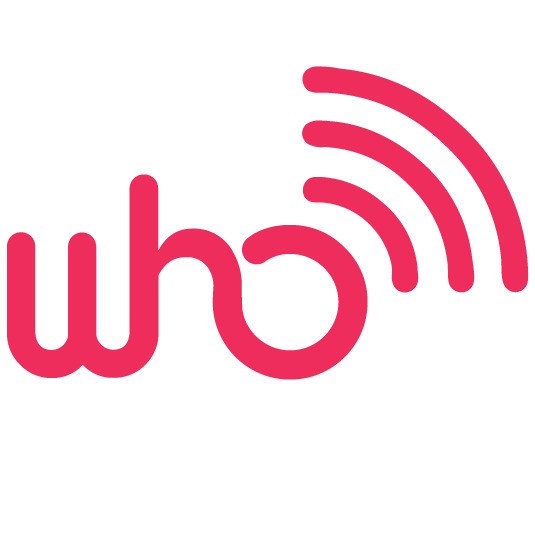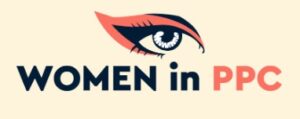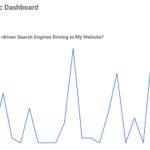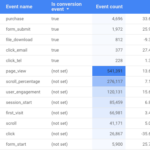For nonprofit organizations, reaching the right people with your message is everything. But with limited budgets and resources, competing for attention can feel overwhelming. This is where Google Ad Grants for Non-Profits come in – a game-changer for reaching wider audiences and amplifying your impact, all without breaking the bank on advertising. Through Google Search ads, Google Ad Grants give you the opportunity to reach people online who are actively seeking information related to your cause.
Table of Contents:
What Are Google Ad Grants for Non-Profits?
This Google Ads Grant program, run by Google, gives eligible non-profits a $10,000 ad credit every single month to spend on Google Search ads. That translates to a daily limit of $329, giving you a huge leg up in spreading the word about your organization. Think about it – when someone turns to Google for information, you want to be right there with the answers from your brand.
These grants give you a powerful platform to be seen at the exact moment people are searching for organizations just like yours. With a Google Ad Grant account, your nonprofit can drive the right stakeholders to your website, make a tangible difference in the digital landscape, and create meaningful impact for your cause.
Why Your Nonprofit Needs to Be Using Google Ad Grants
The real magic happens when your nonprofit appears right when people need it. Imagine someone searching “volunteer opportunities for animal shelters.” If your organization offers those opportunities, being at the top of those search results can be the difference between gaining a dedicated volunteer or not. That translates into saved resources.
PPC Search ads are typically at the top of any search results page whether on desktop or mobile devices. These ads are specifically tailored to those who are already showing interest in what your nonprofit has to offer, increasing the chances of engagement. Applying for Google Ad Grants can significantly benefit your nonprofit by expanding your reach and connecting you with individuals who are actively seeking organizations like yours. The grant program empowers nonprofits to maximize their impact and drive meaningful change by providing valuable advertising resources.
Still need convincing? Once you are part of the Google for Nonprofits ecosystem, you also have access to:
- GoogleWorkspace for NonProfits
- YouTube Nonprofit Program
- Google Earth and Maps
- Google Ad Grant
Let’s see how much of an impact Google Ad Grants for Non-Profits can have on your organization’s goals:
Expand Your Reach, Boost Traffic & Deliver On Your Mission
With Google boasting
over 92% of the global search engine market share, think about the vast number of people relying on it daily. Ignoring this opportunity means potentially missing out on connecting with a massive pool of supporters.
Consider these key areas where your grant can make an impact:
Amplify Your Fundraising Events
Got an exciting gala, auction, or awareness walk coming up? Your grant can showcase it. Use Google Ad credits to drive traffic to event pages and boost registrations. This makes sure your nonprofit is top-of-mind for potential attendees in your local area.

Lift Your Volunteer Applications
Clearly highlighting volunteer opportunities can make a difference. Target ads showcasing specific roles and the impact volunteers make to connect with passionate individuals. This program offers a remarkable opportunity for nonprofits to connect with a broader audience and amplify their message to those seeking to make a difference.
When you consider the time and resources spent to reach volunteers by street teams, printed flyers, hours crafting email campaigns, and more, having your opportunities visible when someone is searching for a position in your area is a big leap. From reading to children, to building a home, nonprofit organizations use ads to reach individuals and corporate teams.
Craft targeted campaigns promoting pages that describe your impact and results along with the needs of your organization. When users search for related keywords, your compelling ad can inspire them to give. Strategically utilizing ad groups within your Google Ads account for maximizing the effectiveness of your Google Ad Grant is our specialty.
Become a Powerful Voice for Change
Rally support for advocacy campaigns with strategically placed ads. Drive traffic to petition signing, social media engagement, or calls to action, magnifying your impact. Your nonprofit organization can tap into the power of targeted advertising and expand its reach to a wider audience actively interested in supporting your mission.
Unlocking Eligibility and Navigating the Application Process
But before you get too excited, make sure your organization fits the bill. To qualify for Google Ad Grants for Non-Profits, you need to check a few boxes. Having a Google Ad Account is only one part of the program. But, qualifying for the program also includes the ability to use several tools within the Google Suite including YouTube and Maps which can expand your reach while driving traffic for people searching for your cause.
Eligibility Criteria You Need To Know
First, you need to hold “current valid charity status” in your country. For U.S.-based nonprofits, that likely means an approved 501(c)(3) status. Google is has an interest in supporting legitimate organizations, so this part is a minimum requirement.
Another caveat, certain organizations are generally excluded, even with a 501(c)(3). These usually include:
- Hospitals and healthcare organizations
- Government entities and organizations
- Schools, academic institutions, and universities
However, there can be exceptions. For instance, the philanthropic arms of educational institutions may sometimes qualify, so always double-check with Google for the most up-to-date details. Google Ad Grants are built to level the playing field by providing nonprofits with valuable advertising opportunities they might not otherwise have access to compared to larger well-funded organizations.
Beyond simply having 501(c)(3) status, there’s a little more to it:
- Google requires nonprofits to be vetted by Percent, their technology verification partner. The easy online application will notify Percent to begin the process. Percent will contact you for more information or documentation so they can verify your organization so be sure to look for emails from the domain @poweredbypercent.com. Most requests are reviewed within 3-5 business days. If you don’t receive a contact from Percent during this time frame check your spam folder and then contact Percent.
- Google notes that validation typically takes 2-14 business days, so there may be a wait at this stage in the process.
- You must have a website and it will need to meet certain standards. That means it needs clear information about your mission, location, what you do, regular updates with fresh content, and should be user-friendly to make navigating a breeze.
- To maintain your status, the account must meet performance metrics for click-thru-rate, quality score, and conversion rates so the account maintains focus.
Maximizing Your Impact: Strategic Steps for Success
Landing those Google Ad Grants for Non-Profits is awesome. But just having them isn’t enough; using them strategically is what truly elevates your nonprofit. Think of it as any other grant money; you wouldn’t just show up and hope for the best. Managing the performance of the campaigns is both part of Google requirements and also good stewardship. We have years of experience in making sure Google Ad Credits are used properly and bring value to the nonprofit organization.
Unleashing the Power of the Right Keywords
Keywords are like magnets pulling in the right people. Mastering this aspect can be what takes your Google Ad Grants campaign from average to outstanding. For instance, instead of simply targeting “donations,” dive deeper. Think “donate winter clothes for homeless” or “pediatric cancer research events.” This way, you attract people actually interested in what you’re offering.
Understanding conversion tracking is crucial for measuring the effectiveness of your campaigns and making informed decisions about your advertising efforts. To get started, conduct thorough keyword research with free tools such as Google Trends or more in-depth tools with paid subscriptions to identify relevant search terms potential visitors might use. This step is important for ensuring that your ads appear in front of the right audience.
Tools like Google Trends, SERanking, or SEMrush can become your best friend. These tools help you figure out what people type when they’re looking for something online and how many people are looking. It is important for nonprofits to have a strong online presence to connect with their target audience and advance their mission via digital channels.
Landing Pages That Make an Impression
Imagine clicking an enticing ad for a free bakery class and ending up on the bakery’s homepage with no clear way to sign up. Frustrating, right? It’s the same with Google Ad Grants. That click means someone’s interested. To create a compelling Google Ads campaign, nonprofits should carefully craft ads that highlight the impact of their work and resonate with their target audience.
Make sure to design those pages specifically to fulfill whatever you promised in the ad. Validate the messaging on your landing pages aligns with your ads to provide a seamless experience for potential donors and constituents.
Don’t Just “Set It and Forget It” – Ongoing Monitoring
You can’t just let things run on autopilot. Track how your campaigns perform – are your ads getting clicks, are people downloading information, contacting you, or donating? Google provides performance tracking analytics tools to be installed with your Google Ad Grants account to keep an eye on these things and they are part of the requirements to maintain a healthy ad account in good standing.
Regularly analyze the performance of your ads campaigns and ad groups to optimize their effectiveness and ensure you’re making the most of your Google Ad Grant. If you find that certain ads are not performing well, make necessary adjustments such as rewriting ad copy, making sure phrases and messages match, or consider pausing them to focus on those generating better results.
Staying Compliant to Keep the Grant Alive
Google is providing an ad credit or in-kind donation of advertising dollars, but you have to work with its rules. Knowing how to best use the Google Ad Grant program is just one part of it. They have terms and conditions that nonprofits must adhere to to keep those free advertising dollars available. If you have a legacy account that was mismanaged or suspended for non-use, we have helped organizations recover the ad account and reinstate your grant.
Failing to comply with any of the requirements could result in your account being paused or, in some cases, permanently deactivated. Make sure your organization understands and adheres to the program’s guidelines to avoid any potential disruptions.
Navigating Google Ad Requirements to Stay on Track
While Google Ad Grants offer remarkable opportunities for nonprofits, there are some key differences between this program and a standard Google Ads account:
- Standard accounts allow various formats – video ads, image ads, and more – while the Grant program currently only supports text-based ads. Although seemingly limiting, don’t underestimate the power of well-crafted text when people are searching online.
- The Google Ad Grants Program only uses Search ads that show up in search engine results pages. Not a deal-breaker considering the ad credit, right?
- Maintain performance metrics including Conversion tracking and Quality Scores.

A powerful tool available within your Google Ad Grants account is the “ad extension,” offering opportunities to elevate your ad and provide more information that supports your growth. Google highlights numerous ad extensions that fall under several different categories, but here are a few of the most common:
| Extension Category |
Key Feature |
Value Proposition |
| Sitelink |
Directs viewers to specific pages on your site from your ad |
Provides direct links to high-value pages on your website, giving potential donors more reasons to click, making your ads larger and giving you more space to promote what your organization does. Google has confirmed that including sitelink extensions can help improve your ad’s click-through rate. |
| Call |
Includes a clickable “call” button with your organization’s phone number |
Enables supporters using mobile devices to connect instantly by phone, allowing them to engage directly with you through their preferred communication channel. Bonus, this also can be tracked as a conversion metric. |
| Location |
Adds your physical address to your ad, accompanied by a clickable map link |
Provides easy location access for those looking for in-person engagement opportunities, enhancing local visibility, especially if your organization depends on the support of your community |
| Callout |
Showcases brief, specific details highlighting your organization’s unique value |
Provides more detailed information about what makes you great to stand out from competitors. They don’t require additional landing pages, giving you greater flexibility in message testing. |
Our real experience comes in maximizing the grant ads to reach new people, build your brand voice, and grow your organization at all levels. See our Case Studies including how we
maximized a Google Nonprofit campaign for a local charitable organization.
FAQs about Google Ad Grants for NonProfits
What are the main restrictions when selecting keywords for Google Ad Grants?
Three major restrictions need to be managed for how nonprofits choose keywords for these campaigns and adgroups:
- No Single-word keywords, unless a specific exception, are a no-go. Phrases are best.
- No Generic keywords, such as those offering little clarity on content, are also best avoided.
- Using competitor brand names in ads is prohibited by Google.
- Maintain minimum requirements for CTR, a Quality Score greater than 3, and a minimum conversion rate for key events.
What is a Target CPA, and how does this type of bid strategy differ from other Google Ads bidding strategies?
Target CPA (Cost-Per-Acquisition), is designed with conversions as its heart, meaning you tell Google your target price per conversion, and their system then tries to match those conversions for you at that price or, ideally, even less.
This stands apart from strategies like:
- Maximize Conversions, aiming for as many conversions as possible, whatever the cost. This is best suited when you’re less concerned with each conversion’s cost.
- Enhanced CPC (ECPC), automatically adjusting your manual bids to try to land more conversions. This adds an element of automation to manual bidding for extra efficiency.
Final Thoughts for Google Ad Grants for Charitable Organizations
Google Ad Grants can transform how you connect with supporters, promote your cause, and ultimately expand your organization’s impact via your website. And the best part? It doesn’t cost anything to sign up. As long as you play by the rules and maintain compliance, these grants offer a renewable line of free advertising for eligible nonprofits. By leveraging the power of Google Ad Grants, you can effectively target your audience, raise awareness, and drive meaningful engagement with your cause.
Still have questions? Need help with setup or managing your Google Ad Grant? WHO Digital Strategy works closely with non-profits to best utilize advertising credits to reach people online.









